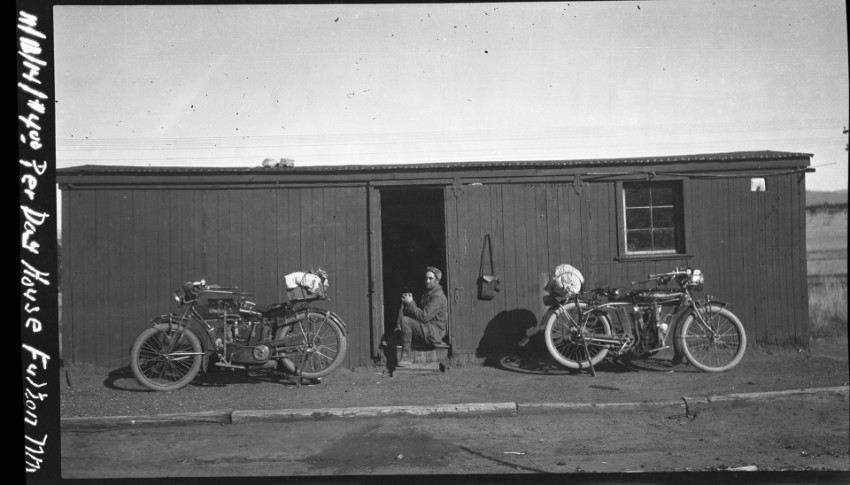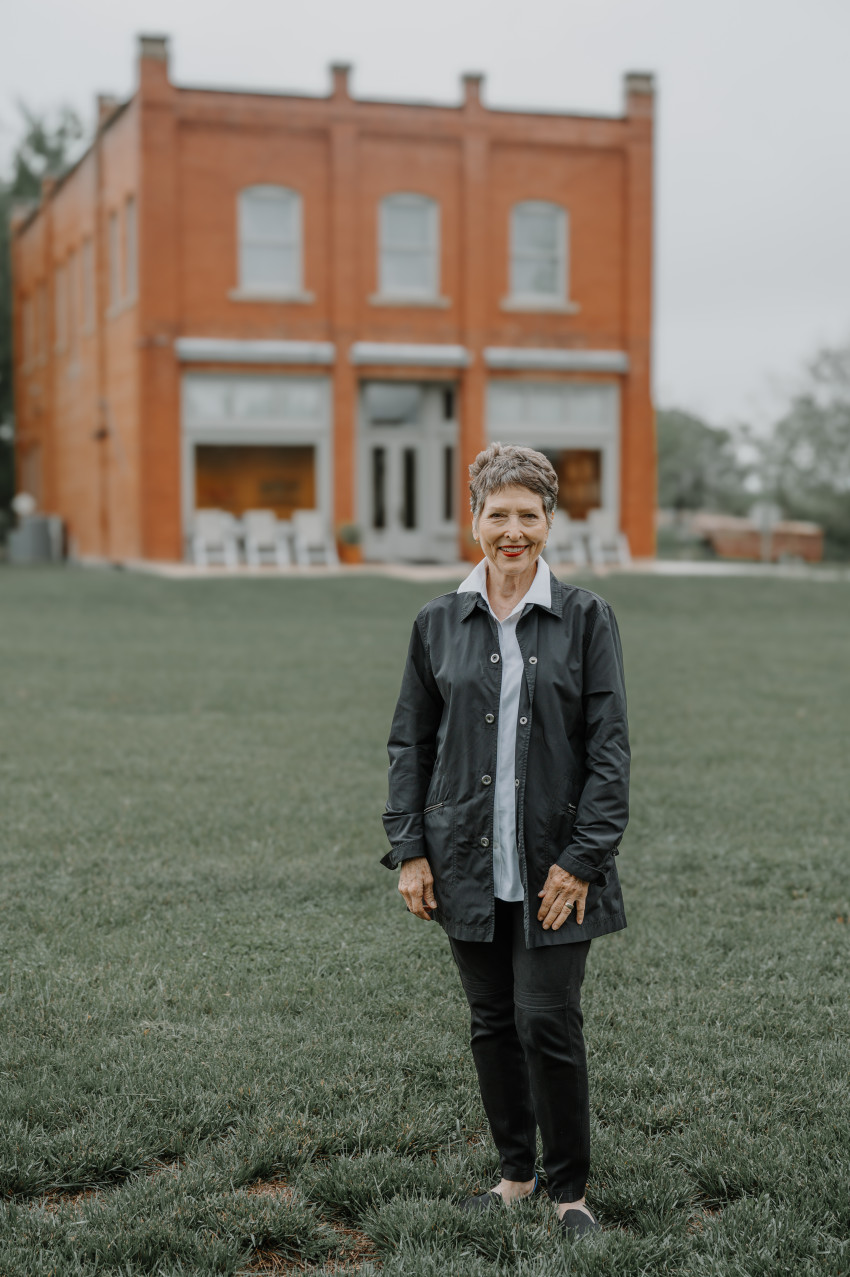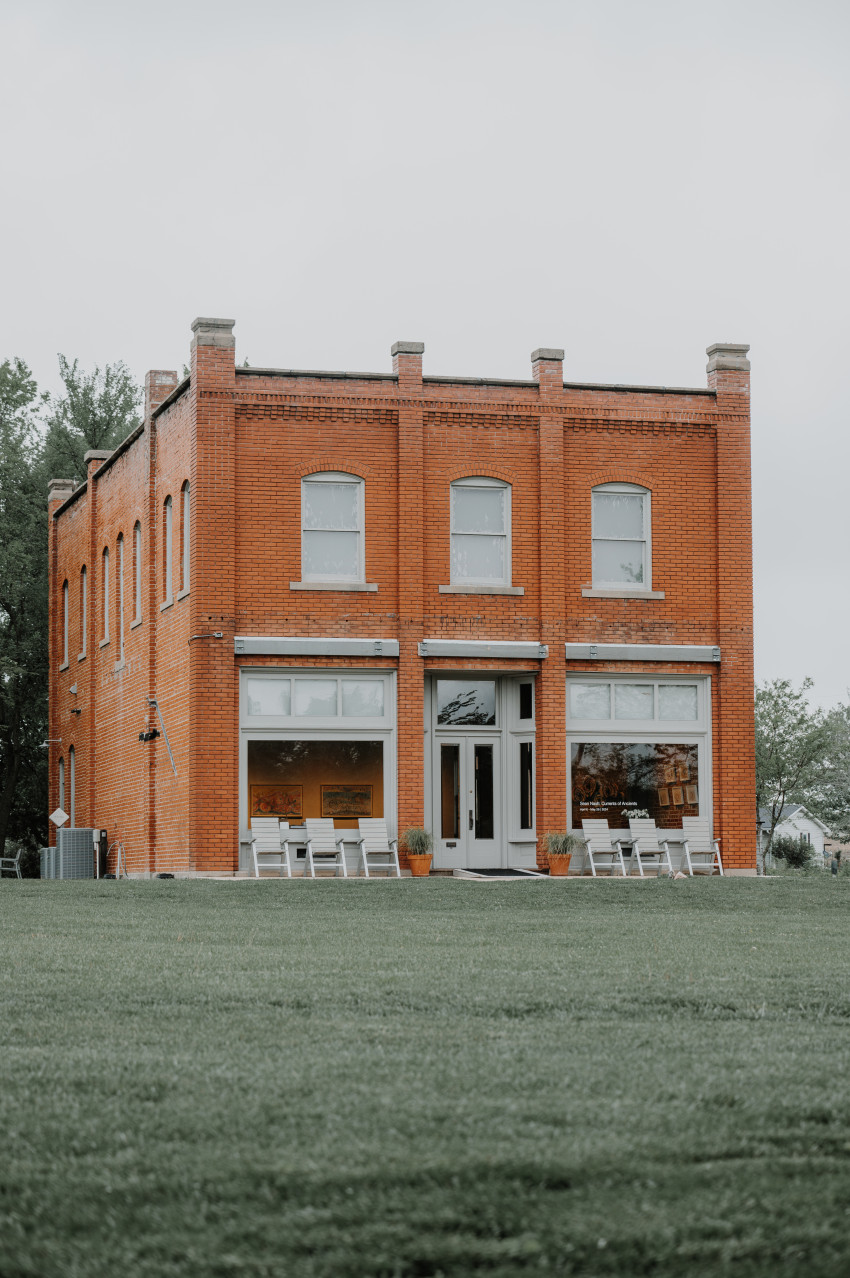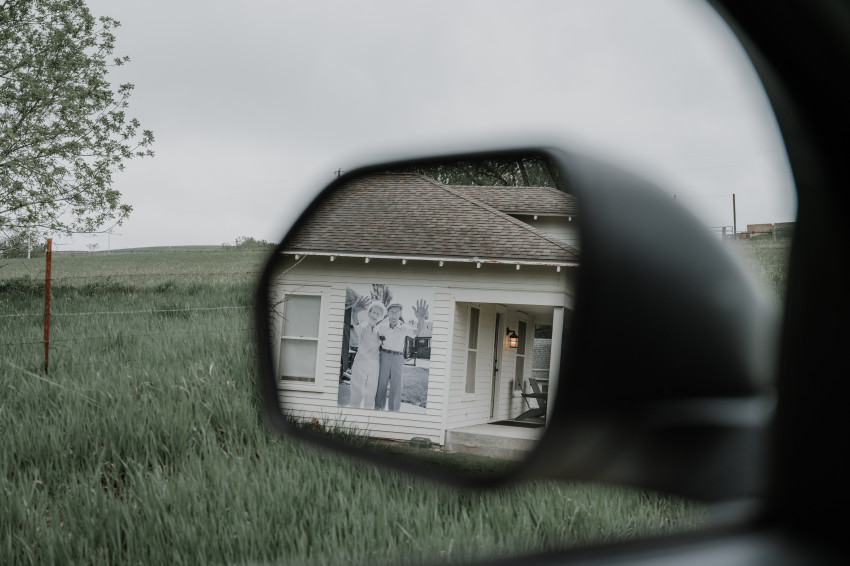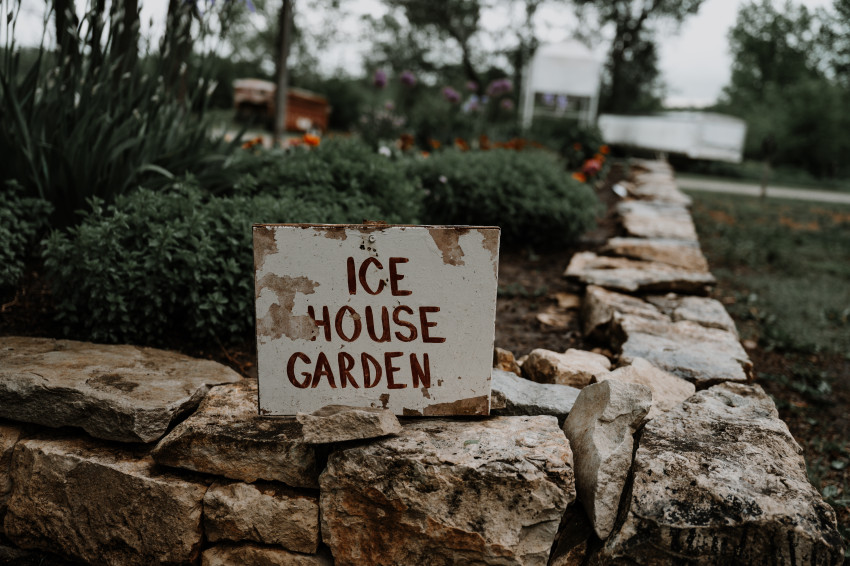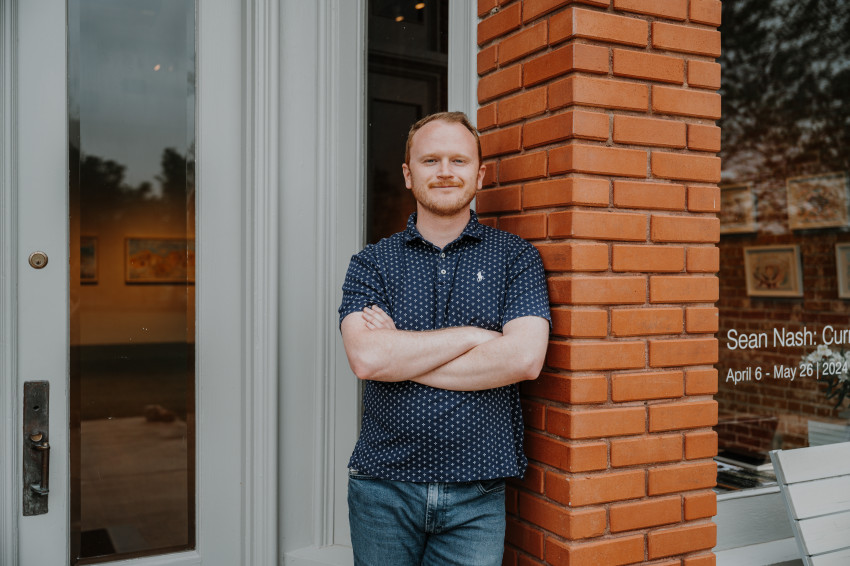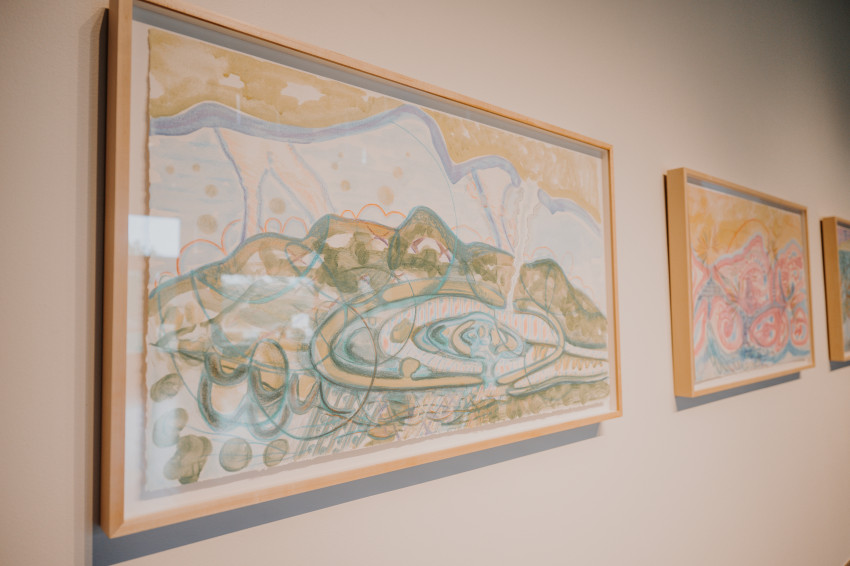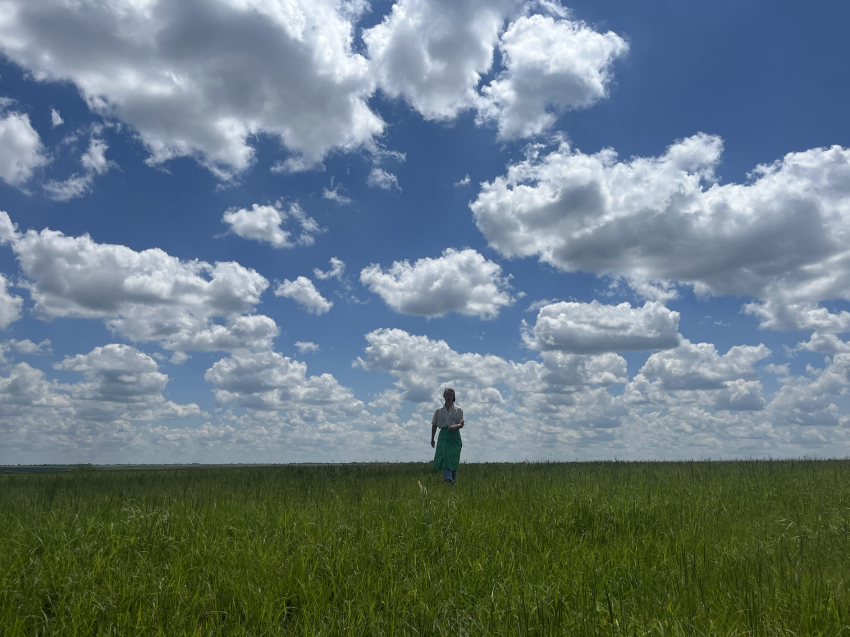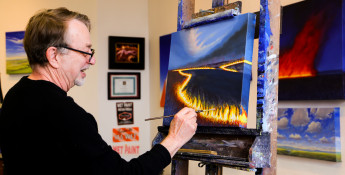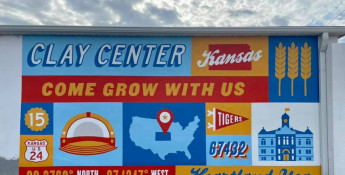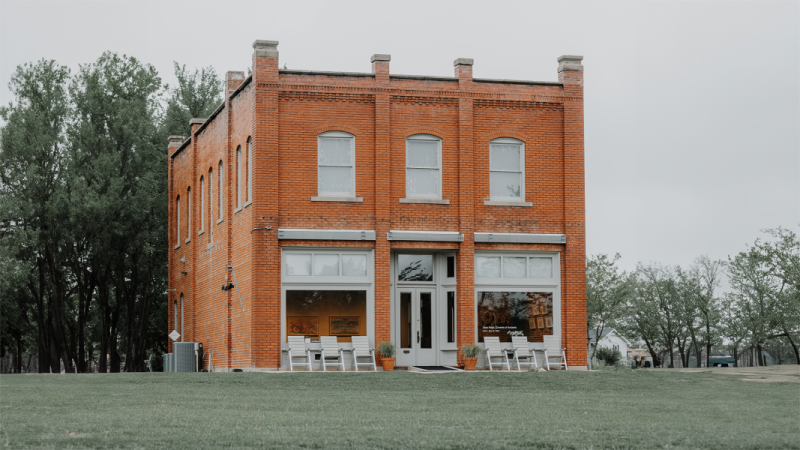By Sheridan Wimmer on May 30, 2024
Reviving Volland: A Legacy of Grit, Art and Community
The Volland Foundation is a testament to historical respect and timeless art
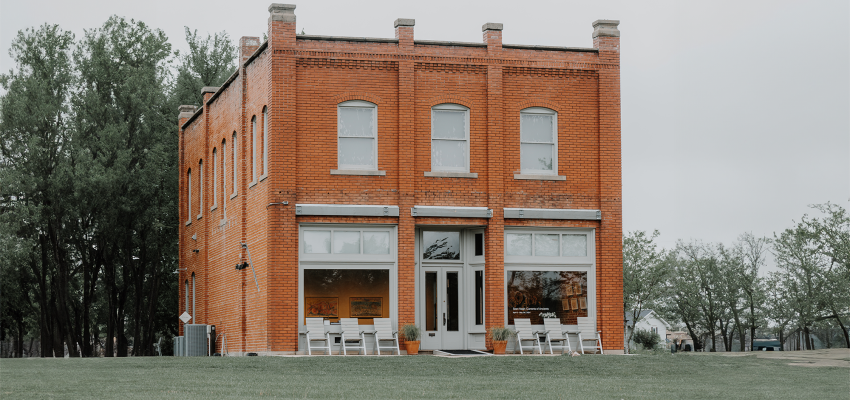
Revitalizing a piece of history takes grit, determination and a deep respect for its original use. When that piece of history lies among the Flint Hills of Kansas, the work becomes a legacy that manifests its own cultivation of art.
The Volland Foundation in rural Wabaunsee County was originally built in 1913 as a general store. The owner, Otto Kratzer, was the youngest of 14 children born to his German immigrant parents. According to an article by Greg Hoots, a former member of the board of directors for the Wabaunsee County Historical Society, the store was popular with the 350 residents of the Washington Township. With such a rural setting, Kratzer would keep the store open until 10 p.m. three nights a week to accommodate farmers working in the fields until sundown.
Kratzer was an adventurous and creative person – he traveled by motorcycle with a friend almost to California, which was their goal. It took them 11 days to get from Volland to the Colorado border, and unsure of where the next gas station was, they boarded a train for the rest of the journey and sent their new Indian motorcycles back to Volland. Otto was a natural with a camera, capturing upwards of 2,500 negatives of life in Volland.
DECLINE AND RESURGENCE
Until 1970, the Kratzer Brothers Mercantile provided a variety of goods to the community. When Otto passed away, the store closed, and his descendants tried to hold onto the building from a distance.
Like many small-town buildings falling to rubble, Volland building’s internal organs dilapidated – the first and second floors succumbed to persistent leaks amongst Kansas storms. But the brick walls of the store remained a strong foundation for someone to come along and rebuild the heart of the store.
RESCUERS OF DOWNED RUBBLE
The demand of the building and the geographical distance from it made the eventual decision to sell logical for the Kratzer family. In 2012, Patty Reece and her husband, Jerry, purchased the store with one caveat – the building couldn’t be torn down. The Reeces have not only not torn the building down, but they’ve built it up to a diamond in the vastness of the Flint Hills.
“Most of the windows were gone, and it was a mess,” Reece says. “It was deteriorating. Someone had offered the Kratzer family money for the bricks – they wanted to tear the building down, but the family didn’t want that to happen.”
The couple, who have built a résumé in restoring old buildings, knew of the Volland location after they knew the Flint Hills could be a place to call home – or at least a second home.
“I knew about the Flint Hills because we would drive from Kansas City, which is where we currently live, to my hometown in Oklahoma,” Reece says. “We bought a second home here around 20 years ago, and we discovered the building by just driving around the country roads. We started to ask about the building and for a while, we heard the owners were out of town and wouldn’t sell it. But when the family was ready to sell, we knew we wanted to restore this beautiful store to something special again.”
REVITALIZATION OF A LEGACY
Special only begins to describe the reconstruction and revitalization efforts the Reece family and their team of architects, engineers, designers and construction workers put into the relic.
“We bought it without seeing what the inside of it looked like. My husband said, ‘That building’s really straight. It can be redone.’ All of this is his fault,” Reece says with a laugh.
The bricks may have been laid with precision and an eye for perfection, but the interior was a different story. With the interior in ruin, the work started by digging everything out.
“The roof was gone,” Reece says. “It had taken the second floor, then the first floor down, leaving debris everywhere.”
Five-gallon buckets and sheer will got the job done of clearing much of the remnants before heavy machinery finished the job – updating a building rich in history to continue a new legacy for the future with a beautiful open space to display artwork, host events and offer opportunities to make more memories.
While the building wasn’t completely finished for its 100th birthday in 2013, Reece hosted a gathering to celebrate the new Volland Store on the beautiful, lush lawn on the grounds.
“We cleaned up what we could, and I put an advertisement in the newspaper that featured one of Otto’s humorous photos of two girls sitting on a counter dressed as men with a caption that said, ‘Let’s have a party.’” The word spread and we had around 500 people show up.”
It’s always a comforting feeling when something that was once a bustling, vibrant, important part of a community can make a comeback like Volland’s. For the Reece family, they’re proud when they hear stories about Otto and how kind he was to the community members of Volland.
“The community would tell us how they remember coming to the store after school, saying how friendly and kind Otto was and he’d always give them penny candy,” Reece says.
VISIONS OF NOSTALGIA
Although the location doesn’t feature candy now, today it provides a visual of sweetness and nostalgia with its showcase of color and whimsy in art displays often showcasing scenes of the rolling Flint Hills.
Turning into the Volland Foundation location, you’re greeted by a large photograph of a couple waving on the side of a house on the property. It is a cheerful welcome and a “come back soon” goodbye when you leave.
“Deanna Dikeman is a photographer who grew up in Iowa, but eventually moved away,” Reece says. “When she’d visit her parents who were still in Iowa, they would come out in the driveway and wave goodbye to her. For 27 years, she captured this simple, yet significant act of love. I know Deanna from a long time ago when we were in a photography society together, and I called her up and asked if she wanted to have an exhibit here at Volland. This is at the same time she had an exhibit in Italy, so we were so honored to have her work displayed here.”
The warm welcome doesn’t end with the photograph of Dikeman’s parents waving. It continues with the Ice House Garden of flowers, herbs and vegetables, with the bright yellow feathers of the American Goldfinches in the yard, the vibrant hues of the artwork in the Volland Foundation and the offering of a cup of coffee from Reece when you walk into the main art gallery.
Art exhibits at the Volland Foundation are curated with care and expertise by Reece and the foundation’s operations director, Ryan Jones. He has a degree in art history and microbiology from the University of Kansas, but his affinity toward art originates with his family.
“My family would take me to museums and my mother got a Bachelor of Fine Arts in textiles from KU, so my interest in art goes back to them,” Jones says.
The art shows at the Volland Foundation tend to have a nod to rural life or an appreciation of the land, like Sean Nash’s “Currents of Ancients,” which featured Nash’s collections of fusulinid impressions he found in limestone during a self-directed residency at Volland in 2023. His paintings and sculptures depict human and plant history – taking inspiration from the domestication of maize and how these changes in food continue today.
“It’s important to find exhibitors who resonate with this area,” Jones says. “I think that’s crucial to a successful exhibit at Volland. Sean’s work was inspired by a self-directed residency in 2023, so he made an effort to learn more about this place. If an exhibitor doesn’t resonate with this area, it can feel like something is lost in the exhibit. Volland aims to be an affable, welcoming place, which isn’t guaranteed in the art world. That’s just one way we set ourselves apart.”
RESIDENCIES PROVIDE ARTISTIC INNOVATION
The residency program Nash participated in is offered by the Volland Foundation to artists interested in experiencing the fresh, spacious Flint Hills.
“We feel the arts are really important, and the residency program is a vital aspect in supporting artists,” Reece says. “The opportunity gives them the space to work, plus we offer them a stipend and a place to stay typically for about two to four weeks.”
In 2024, Volland will host 15 residents throughout three seasons. For two weeks in May, Tori Lawrence and Ellie Goudie-Averill worked on their latest collaboration in Volland – an analog dance film shot on a vintage 16mm Bolex camera. After the film is developed, Lawrence plans to draw directly onto the film using etching, a direct animation technique in which the emulsion is carefully scratched off each frame of the film to create animations on top of the film.
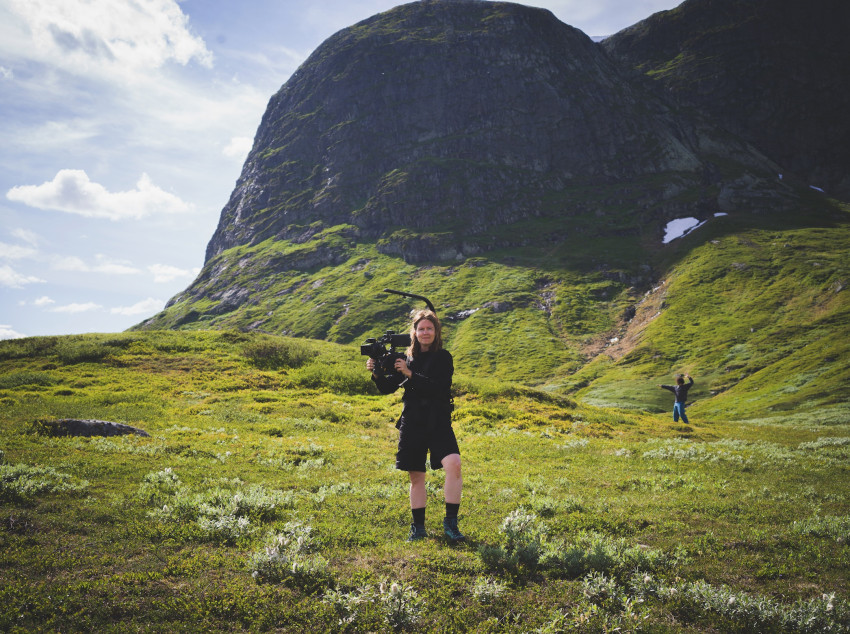
Tori Lawrence captures dance film in Norway
Lawrence is a director, filmmaker, choreographer and educator at Smith College in Massachusetts. She has a dance company that specializes in site-specific dances, making Volland’s location appealing to her and the work she captures.
“The colors of the prairie and sky in May were very inspiring for me in working with color film,” Lawrence says. “Volland is nestled into a gorgeous area that is so peaceful, full of birdsong and rolling hills, which was perfect for us to be able to dance outside and work with the inspiration of the natural Flint Hills environment. We didn’t expect, though, the landscape to be so bucolic. We knew that the Flint Hills were full of rolling hills of grass, but we've been surprised by the rich variety of flora and fauna, as well as the rich history of this part of Kansas.”
Goudie-Averill has a Master of Fine arts in Dance Performance from the University of Iowa and regularly collaborates with Lawrence on her films. Originally from Kansas, Goudie-Averill currently teaches at Mount Holyoke and at the School for Contemporary Dance and Thought/Hawley Street Ballet in Massachusetts.
“This has been an incredible opportunity to connect more deeply with a landscape that was so familiar since I grew up in Topeka,” Goudie-Averill says. “I would often visit the Flint Hills, but never got to spend any extended period in the landscape and, although I danced once with Prairie Wind Dancers during the Symphony of the Flint Hills, I never got to participate in the creation of an original artwork within the prairie. This experience with Tori at Volland has strengthened my love and appreciation for the place I call home.”
Home is where the heart is, and for Reece, it’s within the solid bricks of the Volland Foundation. Volland became a 501c3 in 2021 and is a testament to the Reece family’s grit and determination to garner historical respect for the contributions of a story not forgotten. The revitalization of a piece of history lives on to capture the beauty of art – in its many forms.
To get more people to see the artwork displayed, intentional programming is organized such as book signings, panels, costume exhibits, plays in the “Ruin” and more. To learn more about the Volland Foundation and the events offered, visit www.vollandfoundation.org.
To learn more about the history of Otto Kratzer and the Volland Store, his photographs are featured at the Wabaunsee County Historical Society in Alma.


